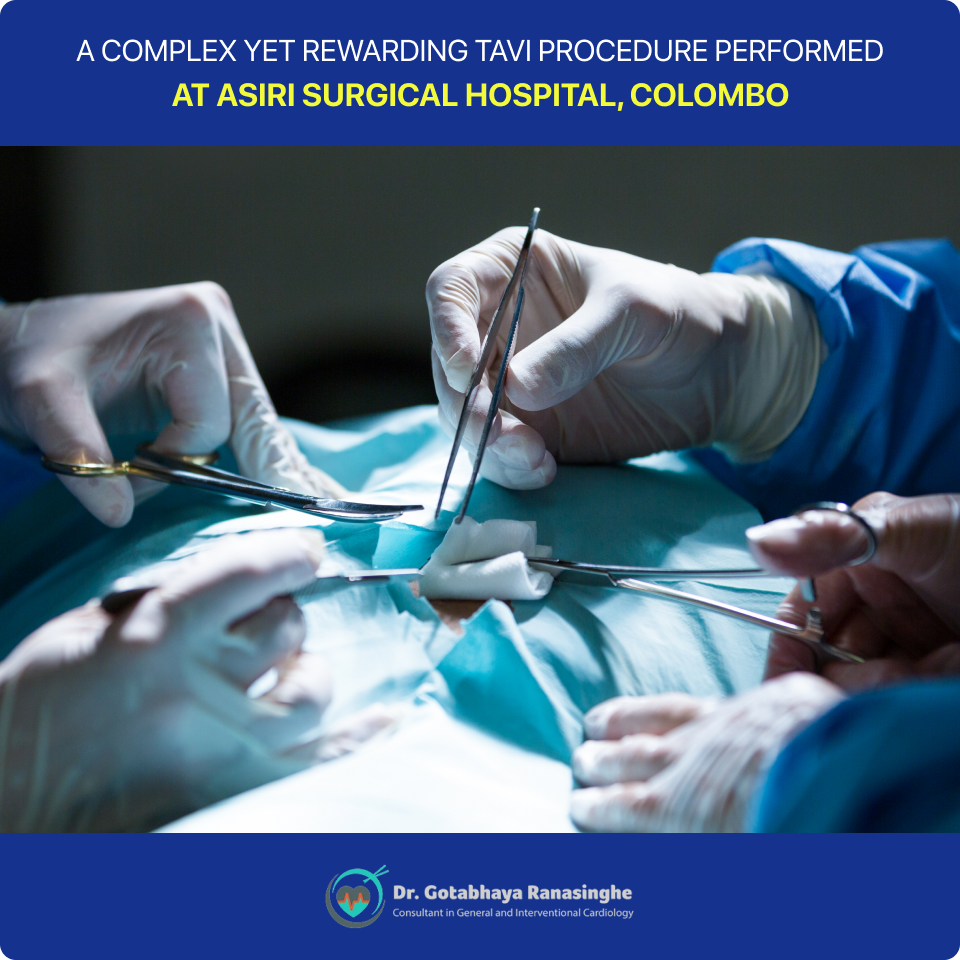A few weeks ago, together with two other cardiologists, I had the privilege of performing a Transcatheter Aortic Valve Implantation (TAVI) on a 78-year-old woman at Asiri Surgical Hospital in Colombo. This was one of the most complex cases I’ve encountered in my career.
The patient had a history of significant heart disease, with both aortic and mitral valve involvement. Her aortic valve was severely calcified with tight stenosis, and she also had residual moderate mitral stenosis. Adding to the complexity, she had undergone coronary artery bypass surgery several years ago. Her condition was debilitating .she was unable to attend to even her basic personal needs.
Several people had advised her to travel abroad to India, Singapore, or elsewhere to undergo the TAVI procedure. However, due to her fragile condition and limited mobility, organizing such a trip was not feasible. It became clear to me that this patient needed urgent help here at home.
As doctors, we have a duty to care for our patients ,not just when it’s easy or convenient, but especially when it’s difficult. That belief compelled me to take on this challenge. With the help of an excellent team, we were able to make it happen.
I reached out to Dr. Anuj Kapadia, a well known interventional cardiologist from Hyderabad, who graciously accepted my invitation to come and guide the procedure.My long-time colleague, Dr. Roshan Paranamana, a talented interventional cardiologist worked alongside me throughout the procedure .The entire Asiri Cardiac Catheterization Laboratory team, our anesthesiologists, the surgical backup team and every individual involved played a critical role in the successful outcome.
The procedure was performed successfully. The patient recovered well, and seeing her improvement has been deeply fulfilling.
However, I must emphasize an important issue: the cost of TAVI in Sri Lanka is prohibitively high. Although it’s a minimally invasive and life-saving procedure, many patients simply cannot afford it. This severely limits access, especially for those in need who depend on the public healthcare system.
My humble appeal is to the relevant health authorities and policymakers:
Please work towards making this procedure more affordable and accessible. Introduce it in government hospitals. Provide funding or subsidies where possible. Let us ensure that all Sri Lankans, regardless of financial status, have access to modern, life-saving cardiac care.
This is not just about a medical procedure. It’s about giving dignity, hope, and life back to people who have none left. That is our calling and our collective responsibility.

